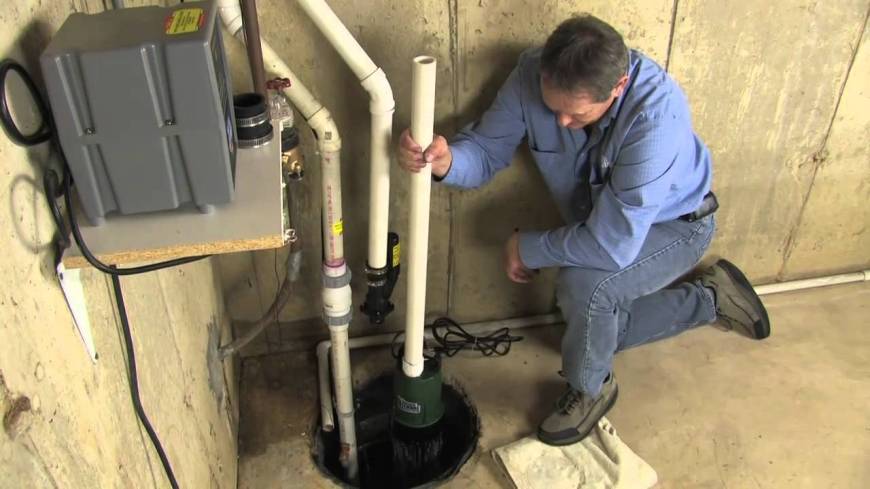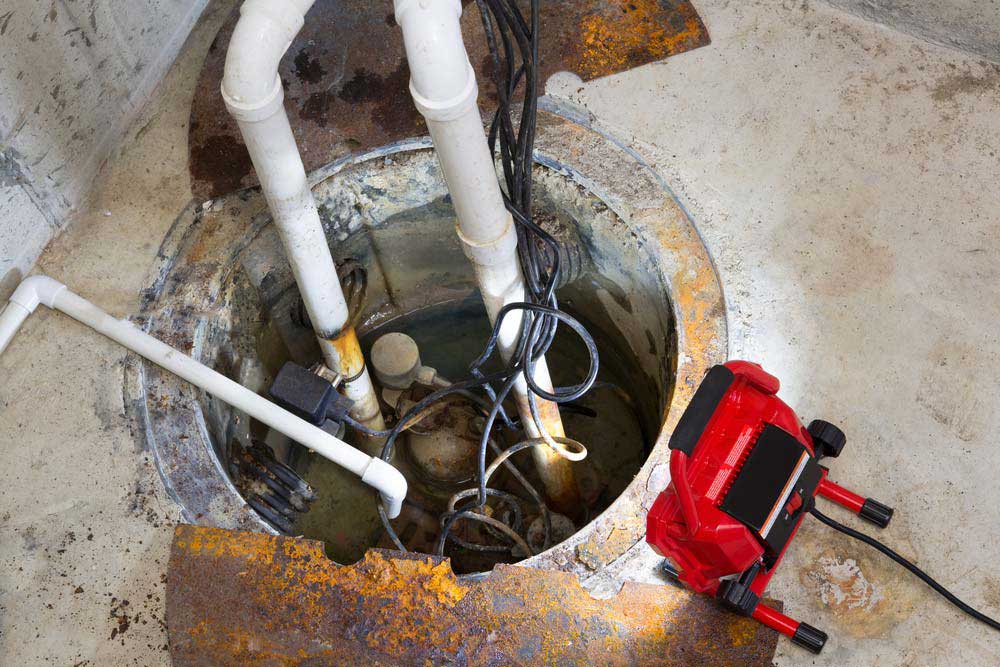The Guide to Properly Taking Care of a Sump Pump
The Guide to Properly Taking Care of a Sump Pump
Blog Article
What're your concepts about Cleaning & Maintenance Tips for Your Home's Sump Pump?

Sump pumps are essential parts in numerous homes, specifically in locations vulnerable to flooding or extreme moisture. They aid protect against water damage by efficiently getting rid of excess water from basements or crawl spaces. Nonetheless, like any other home appliance, sump pumps need regular maintenance to guarantee they operate efficiently when needed one of the most. Cleansing your sump pump is an important part of its upkeep, and comprehending how to do it properly can conserve you from expensive repair work and prospective disasters.
Introduction
Maintaining a clean sump pump is vital for its appropriate performance and longevity. Neglecting this vital job can cause blockages, breakdowns, and eventually, water damages to your residential or commercial property. Therefore, learning exactly how to clean a sump pump is critical for house owners that count on these tools to maintain their basements dry and secured.
Understanding the Sump Pump
Before diving right into the cleaning procedure, it's vital to have a fundamental understanding of exactly how a sump pump functions. Commonly set up in a pit or container below the basement flooring, a sump pump contains several key elements, consisting of a pump, a float button, and a discharge pipeline. When water builds up in the pit, the float button turns on the pump, which after that pumps the water out through the discharge pipe, away from the structure's structure.
Signs of a Dirty Sump Pump
Understanding when your sump pump needs cleansing is essential for avoiding potential breakdowns. Some typical indicators that show an unclean sump pump include odd noises throughout procedure, decreased water flow, and noticeable debris in the pit. If you notice any of these signs, it's important to cleanse your sump pump promptly to prevent any more problems.
Planning for Cleaning
Before you start cleaning your sump pump, it's vital to take some security preventative measures. Start by turning off the power to the pump to prevent any kind of electrical mishaps. In addition, use suitable protective gear, such as gloves and safety glasses, to safeguard yourself from dust, particles, and possible virus.
Step-by-step Guide to Cleansing a Sump Pump
Shutting down the Power
Begin by separating the power supply to the sump pump to stop any type of mishaps while cleansing.
Getting Rid Of Debris and Dust
Utilize a pail or a scoop to get rid of any type of noticeable debris, dirt, or debris from the sump pit. Dispose of the particles effectively to prevent it from blocking the pump or the discharge pipeline.
Cleaning the Pump and Float Switch Over
Once the pit is free from particles, meticulously get rid of the pump from the pit. Evaluate the pump and the float button for any type of indications of damages or wear. Use a soft brush or cloth to clean the surfaces and eliminate any accumulated gunk.
Purging the System
After cleansing the pump and float switch, flush the sump pit with clean water to get rid of any type of remaining dust or debris. This will certainly aid guarantee that the pump operates smoothly and successfully.
Looking For Correct Performance
Before re-installing the pump, execute a quick test to ensure that the float switch turns on the pump properly. Put some water right into the sump pit and observe the pump's operation. If every little thing is functioning appropriately, you can reassemble the pump and reconnect the power supply.
Maintenance Tips to Keep Your Sump Pump Clean
Along with routine cleansing, there are several maintenance ideas you can comply with to keep your sump pump in ideal condition:
Final thought
Cleansing your sump pump is a critical aspect of its maintenance and ensures that it operates successfully when you require it one of the most. By following the actions outlined in this guide and incorporating regular upkeep right into your regimen, you can extend the lifespan of your sump pump and safeguard your home from water damage.
6 STEPS ON HOW TO CLEAN A SUMP PUMP PROPERLY
UNDERSTANDING SUMP PUMPS
Your sump pump plays a crucial role in protecting your home by managing and removing excess water. It primarily functions as a “shield”, guarding your basement against the damaging effects of water accumulation. The pump is housed in a sump pit in the lowest part of your basement, and its job is to pump out any water that collects there.
During heavy rainfalls or when snow melts rapidly, water can infiltrate your basement, posing potential risks like flooding, structural damage, and harmful mold growth. Here, the sump pump springs into action, pumping out the intruding water and directing it away from your home.
SAFETY FIRST
Before cleaning, remember to prioritize safety. Disconnect the sump pump from the power source to prevent any accidental electric shocks. Also, wear sturdy gloves to protect your hands from any sharp or dirty components within the pump.
REMOVE THE SUMP PUMP
After ensuring your safety, the next step is to remove the sump pump from its pit. Doing this might require careful maneuvering as you don’t want to damage any pump components. Once removed, clean the sump pit to remove any accumulated debris or sludge.
INSPECT THE PUMP
Inspect the pump for any visible signs of wear or damage. Check the power cord, float switch, and impeller housing. If any components look worn out or damaged, consider replacing them to ensure optimal performance.
CLEAN THE PUMP
Thoroughly clean the pump with warm, soapy water. Make sure to rid it of any dirt, gravel, or other debris that might impede its performance. You can use a toothbrush to clean the small, hard-to-reach parts of the pump.
REINSTALL THE SUMP PUMP
Reinstall the pump into the sump pit Make sure it’s positioned correctly to remove the water effectively Once it’s back in place, reconnect it to the power source TEST THE PUMP
Finally, pour some water into the pit to ensure the pump works correctly. It should start automatically and begin pumping out the water; if it doesn’t, check the power source and the positioning of the pump.
Remember, while cleaning your sump pump is an essential part of home maintenance, hiring a professional plumber for a thorough inspection and cleaning at least once a year is also important. This will ensure that your pump is in optimal condition, ready to protect your home from potential water damage.
BEST PRACTICES FOR CLEANING SUMP PUMP DISCHARGE PIPES
Regular Inspection: Regularly inspect your discharge pipes, especially during heavy rainfall or snowmelt periods. Look for any signs of blockage or damage. Early detection of problems can prevent serious issues down the line. Periodic Cleaning: Over time, sediment and debris can accumulate in the discharge pipes, impeding the flow of water. Regular cleaning helps keep the pipes clear and functioning efficiently. You can use a high-pressure water jet to effectively clean the pipes. Insulation During Winter: In colder climates, discharge pipes can freeze, blocking the outflow of water. Protect your discharge pipes from freezing temperatures by insulating them with foam pipe insulation. This will ensure the sump pump can continue to discharge water even in freezing conditions. Proper Positioning: The discharge pipe should be positioned to direct water away from your home’s foundation. Improper positioning can lead to water seeping back into the basement. Ensure the pipe is long enough and angled correctly. Installation of a Check Valve: A check valve prevents water from flowing back into your sump pit after the pump has pushed it out. Installing a check valve helps maintain the efficiency of your sump pump and reduces the risk of flooding. Minimize Pipe Turns: Every curve or turn in the discharge pipe can decrease the efficiency of water flow. By minimizing turns and bends in your discharge pipe, you can increase the efficiency of your sump pump. https://www.fullspeedplumbing.com/how-to-clean-a-sump-pump-properly9999/

I was made aware of that report on Keep Your Sump Pump Clean, It'll Keep You Dry from a good friend on a different web page. Do you know another person who is truly interested in the subject? Feel free to share it. Kudos for being here. Don't hesitate to pay a visit to our blog back soon.
Start Now Report this page